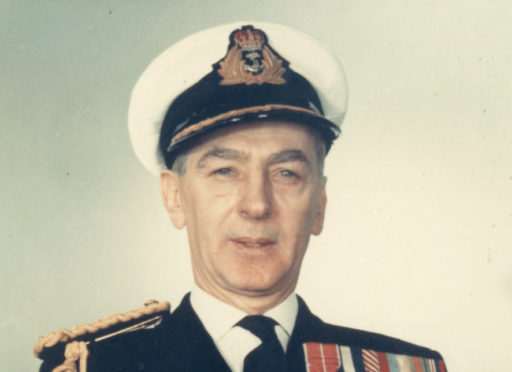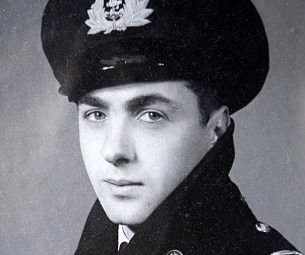Stepping onto a humid bus in Spain, Nicholas Jones was startled when a fellow passenger pointed at the DVD he had tucked under his arm and began exclaiming “I know that man, he was my commander at Lossiemouth”.
Even 2,000 miles away from Moray, the remarkable story of the record-breaking pilot Eric Melrose “Winkle” Brown was known.
To mark the recent centenary of the birth of Scotland’s greatest aviator, TV and film producer Nicholas Jones has re-issued the DVD of his documentary entitled Eric Brown – A Pilot’s Story.
The core of Mr Jones’s comprehensive film is a long interview with Captain Brown where he opens up about his life and times – including the years he commanded the Navy’s fighter jet 804 squadron at Lossiemouth.
Born in 1919 into a military family, he embarked on his soaring journey when he learnt to fly whilst attending university.
At just 23, he was chosen to be a Naval test pilot and just a couple of years later would be anointed the Chief Naval test pilot during the Second World War.
This was to be the beginning of “Winkle” Brown – as he was affectionately nicknamed by his comrades for his short stature – accumulating numerous “firsts” in naval aviation.
Cpt Brown flew 487 types of aircraft, which is still more than anyone else in history.
Mr Jones said: “Today’s airline pilot may only ever fly one aircraft in his whole life.”
Also to this day, Cpt Brown holds the world record for the number of aircraft carrier deck take-offs and landings performed, which are 2,407 and 2, 271 respectively.
During the making of the film and the beginning of their friendship, Mr Jones commented to Cpt Brown that he was “the father of Top Gun” as he is the first man to land an airplane on a jet craft carrier.
This is now a compulsory aspect of being a pilot but in 1945 it was particularly difficult, as the early jets had very little lift control and locating a carrier “was like finding a little matchbox in the sea”.
Performing such a task was intensely precarious and one wrong move could result in the death of hundreds of people.
Mr Jones said: “What makes his career so exceptional is that no one did what he did, he overcame huge dangers such as flying a Spitfire into thunder clouds just to see how an aircraft would behave in turbulence.
WATCH THE TRAILER
Eric Brown – A Pilot’s Story from Quanta Films on Vimeo.
“Of course, nobody in their right mind would do that but he lived to tell the tale. He was an enormously brave man.”
Cpt Brown was one of Lossiemouth’s last Station Commanders during its Naval years
After the war in 1946, the RAF base converted to the Royal Naval Air Station Lossiemouth, known as HMS Fulmar.
During the 60s until its reversion back to an air force base in 1972, Cpt Brown commanded the Moray base, which Mr Jones says “is where the legend of Eric Brown at Lossiemouth arises from.”
Captain Brown’s stellar career has undoubtedly inspired several generations of young pilots as they pass through the halls of Lossiemouth and look up to his painted portrait which proudly adorns the wall.
Flight Lieutenant and communications officer at RAF Lossiemouth, Daniel Chorley said: “We are lucky to be able to say he was our Station Commander during his time in the Royal Navy.”
Mr Jones added: “He left a memory there because he really is an exceptionally distinguished pilot.
“Commanders come and go but he brought with him the aura of being such a legendary pilot and the aviation equivalent of a rock star.
“I think the people of Moray will be intrigued to know they had such an interesting person once behind those foreboding metal fences, and those who had any connection will remember him as a dynamic station commander.”

